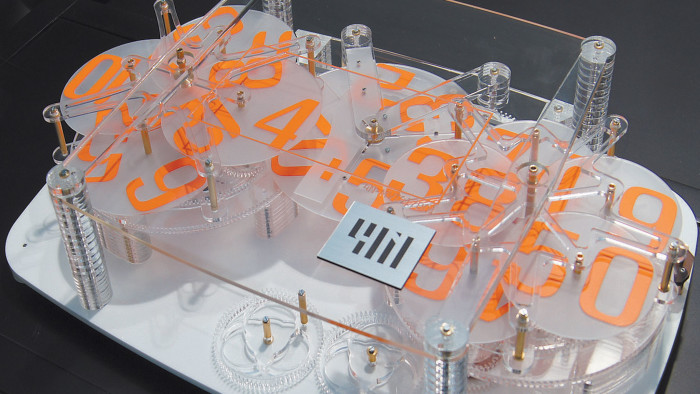Prototypes prove their value as pieces of watchmaking history

Roula Khalaf, Editor of the FT, selects her favourite stories in this weekly newsletter.
Master watchmakers work in miniature. But when developing complicated models, often the best way for designers to test concepts is to build maquettes – 10/1-scale models.
While they were never intended to appeal to collectors, some watchmakers have found ways to make the value of these snapshots of engineering history last long after finished products have gone on the market.
Claudio Cavaliere, head of product management at Audemars Piguet, says the watchmaker’s design team relies on maquettes because they are cheap and quick to build, and make it easier “to solve the first main construction issues”.
“The maquette helps us confirm the principle of a function but also makes it easy to adapt,” he says.
Watch fairs are one way in which watchmakers are extending the useful lives of maquettes. When Audemars Piguet developed its direct impulse escapement, which offered protection against shocks, the brand presented its maquette “to explain the novel function”, says Mr. Cavaliere.
François Quentin, an independent French watchmaker, used a similar approach to establish his brand, 4N, when he presented his first concept, the 4N-MVT01, at the Baselworld fair in 2011.
Audemars Piguet Renaud & Papi, a movement maker that builds maquettes during development, created an example for Mr Quentin’s stand. The scale makes it easy to assemble, Mr Quentin says, “and allows an educational viewing” of the mechanism.
He was surprised by the interest of visitors. “Many admired the Plexiglas model and emphasised [it] would make a nice clock,” says Mr Quentin. He is now tempted to commercialise a maquette based on the 4N-MVT01’s movement.
Mr Cavaliere, however, says Audemars Piguet has declined such offers. “A maquette is part of the development process and it needs to remain in house,” he says.
But his workshop’s maquettes are not stored away and forgotten. “We may also use the maquette as a training tool,” he says.
One brand has decided to give its maquettes away. Greubel Forsey this year offered 150 replicas of its Double Tourbillon 30° maquette.
Stephen Forsey, one of the watchmaker’s founders, built the original in 2002 using a Meccano set, while looking for a way to design a more accurate tourbillon. “We had few resources, so this model was hugely helpful,” says his co-founder, Robert Greubel. Two years later, they finalised a 1/1 scale version, which they included in the brand’s first watches.
The watchmaker says it would not sell replica maquettes because it believes the pieces are priceless. “The Meccano maquette is something very strong symbolically,” says Mr Greubel. “It represents the first time [an] idea has been materially completed.”
Despite interest in maquettes, few are on display in horology museums.
Sylvie Dricourt, administrator of the Patek Philippe Museum in Geneva, says just a handful are kept in its collection, in part because of “the secrecy modern watchmakers keep over their designs.”
One reason museums may not want maquettes, says Mr Cavaliere, is that most “look ugly – they are not very nice to present”.
The solution, he says, would be to rebuild them with other materials, but that would defeat the purpose of saving an original piece of engineering.
Maquettes often reveal problems with the concepts being tested, but even these are kept. Just because they don’t work now does not mean they will never work, says Mr Cavaliere.
In some cases, he says, they are never mentioned again. “But other times, we go back to them, years later, because we have found a way to use them.”
Several iterations of the same concept can be repeated “up to 10 times”, according to Mr Cavaliere, “or until it is fit to be made on a 1/1 scale.”
Comments